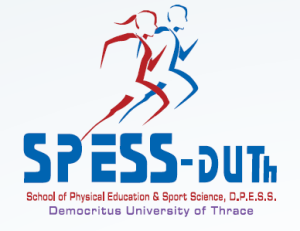Research Paper
Tsakonitis Ch.1, Fatouros I.2, Mpatsiou S.1, Avloniti A.1, Draganidis D.2, Stampoulis Th.1, Kelaraki D.1, Poulios A.2, Chatzinikolaou A.1
1School of Physical Education and Sport Science, Democritus University of Thrace
2School of Physical Education and Sport Science, University of Thessaly
tsakon@windowslive.com
Abstract:
Wheelchair basketball is one of the most popular sports for people with Spinal Cord Injuries (SCI)
Objective The aim of the present study was to assess metabolic responses and energy expenditure during a wheelchair basketball match in players with SCI.
Method. Ten wheelchair male basketball players (n= aged 18 34 years, participated in one match per week over a 10 week period (10 matches in total), with one player being assess ed in each match. A portable gas analyzer (SensorMedics 2900c, SensorMedics Corporation, USA) was adapted to the player throughout the 40 min match, to record oxygen consumption (one per game), while blood samples were drawn for blood lactate determination.
Results . Α remarkable increase in oxygen consumption was observed, compared to the initial values, with the largest increase occurring in the 3rd period of the match. At the same time, the total energy expenditure of the match increased about 12 times up, compared t o the values before the start of the match. During the 4th period, recorded the greatest increase in lactic acid, in all athletes. Correspondingly the heart rate showed a small increase at the 4th period of the match.
Conclusion. Participation in wheelchair basketball match play results in substantial increase in energy expenditure, while both glycolytic and oxidative pathway are highly taxed to meet the energy requirements.
Keywords:
SCI, wheelchair basketball game, metabolic demands.
Download (pdf, 547kb)






